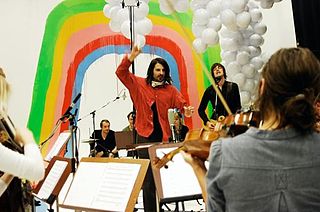| Look up string theory in Wiktionary, the free dictionary. |
String theory is a branch of theoretical physics.
String theory may also refer to:
- Concatenation theory, a topic in symbolic logic dealing with strings of characters
Concatenation theory, also called string theory, character-string theory, or theoretical syntax, studies character strings over finite alphabets of characters, signs, symbols, or marks. String theory is foundational for formal linguistics, computer science, logic, and metamathematics especially proof theory. A generative grammar can be seen as a recursive definition in string theory.
Music
- String Theory (band), an American electronic music band
- String Theory (Hanson album), 2018
- String Theory (The Selecter album), 2013
String Theory was an electronic music band from Chicago that existed from 1997 until 2005. The members were Joshua R. Davison and Nathan T. Tucker. Contemporaries included Casino vs Japan, Pulseprogramming, and Telefon Tel Aviv.

String Theory is a double album by Hanson, released on November 9, 2018, featuring the Prague Symphony performing string arrangements by composer David Campbell. The album was produced by Hanson.

String Theory is the thirteenth studio album by English ska band The Selecter, released on Vocaphone Music in 2013. After the discussion of multiculturalism and the racial equality of 2 Tone music on the band's previous album Made in Britain (2011), String Theory built upon on and extends from those themes, addressing contemporary issues in the United Kingdom such as riots and racial issues, backing the music with ska and reggae rhythms. The band took influence from the string theory which suggests humans are made of the same particles, and how it can be a metaphor for a connection between all human beings.
Other media
- "String Theory" (Heroes), retitled "Five Years Gone", an episode of the TV series Heroes
- "String Theory" (The Shield), an episode of the TV series The Shield
- String Theory (novels), a trilogy of Star Trek: Voyager novels
- String Theory, a webcomic graphic novel based on the TV series Heroes
- String Theory (artist collective), based in Gothenburg, Sweden, and Berlin, Germany

The String Theory is an international music and art project which provides a creative joint venture production platform for composers, artists, musicians and video artists from different countries. The project was founded in 2006 as The Berlin String Theory, followed by The Göteborg String Theory in 2009.


